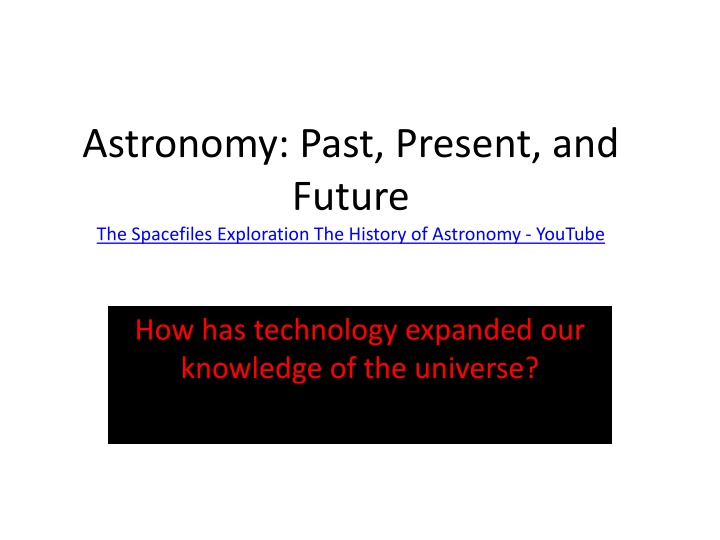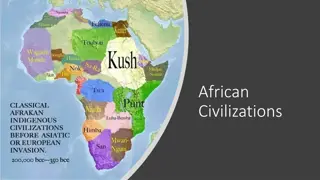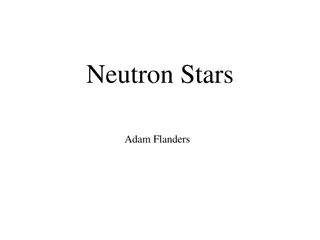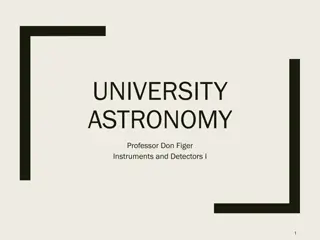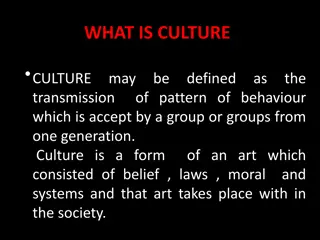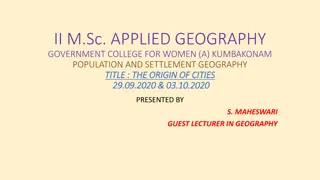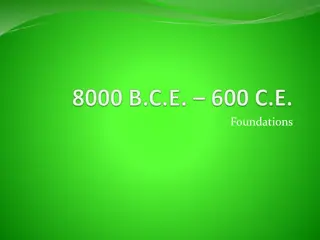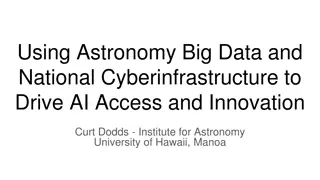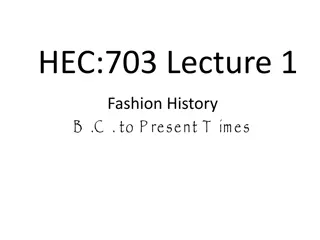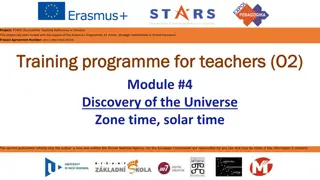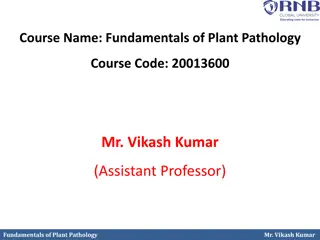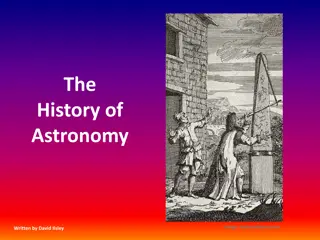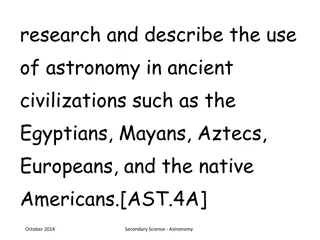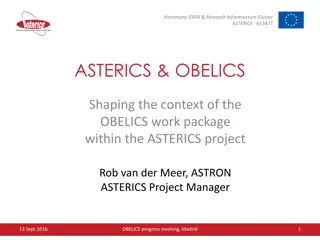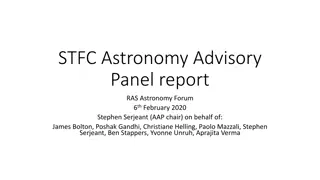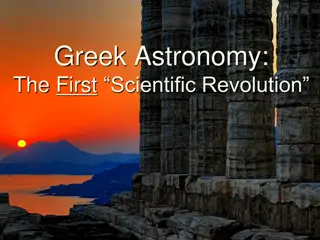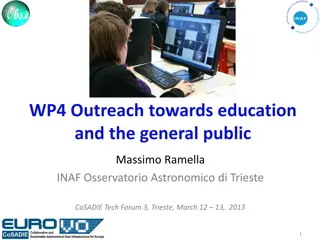Evolution of Astronomy: From Ancient Civilizations to Modern Discoveries
Explore the history of astronomy from ancient Egyptian beliefs in Ra to the groundbreaking theories of Copernicus and Galileo. Witness how technology has revolutionized our understanding of the universe, leading to discoveries such as the heliocentric model and Kepler's laws of planetary motion.
Download Presentation

Please find below an Image/Link to download the presentation.
The content on the website is provided AS IS for your information and personal use only. It may not be sold, licensed, or shared on other websites without obtaining consent from the author.If you encounter any issues during the download, it is possible that the publisher has removed the file from their server.
You are allowed to download the files provided on this website for personal or commercial use, subject to the condition that they are used lawfully. All files are the property of their respective owners.
The content on the website is provided AS IS for your information and personal use only. It may not be sold, licensed, or shared on other websites without obtaining consent from the author.
E N D
Presentation Transcript
Astronomy: Past, Present, and Future The Spacefiles Exploration The History of Astronomy - YouTube How has technology expanded our knowledge of the universe?
Early Civilization Egyptians once told the story of Ra, the sun god, who sailed his barge across the sky- the heavenly Nile River. Ra traveled the sky from east to west each day.
350 BC Humans began to pay closer attention to the sun and the stars (constellations) Based on these observations and their tracking of the stars, astronomers, those who study the science of heavenly bodies and of their sizes, motions, and compositions, were able to make some accurate observations regarding the relative size and distance of the sun and moon.
200 AD Ptolemy comes on the scene. He proposed the theory that the Earth is the center of the universe geocentric theory. This idea, although wrong, was widely accepted for many centuries.
15th century Nicholas Copernicus a Polish astronomer first suggests the idea that the Earth is not the center of the universe. Instead he proposes the idea that all the planets revolve around the sun! (Heliocentric theory) He was regarded as a foolish thinker at the time.
17th Century Hans Lippershey Galileo Galilei Improved Leppershey s telescope and turned it up into the night sky. Went on to discover our Milky Way as well as provided proof that Copernicus heliocentric theory was correct! Galileo was put under house arrest for making such claims against the Church s dictated belief. Hans Lippershey- Dutch optician put two lenses together making the first spyglass for which he was well paid by the Dutch military! These spyglasses were used to spy on enemy ships
More 17th Century Discoveries Tycho Brahe Danish astronomer and mentor of Kepler Johannes Kepler- German mathematician Worked under the assumption that Galileo was correct and used the telescope and Kepler s mathematical calculations to further the heliocentric theory Student of Tycho Brahe and continued his work upon Brahe s death. Discovered that planets did not move in a circular pathway around the sun but rather an elliptical or oval one. Credited for Kepler s laws regarding the shape and speed of planetary orbits.
Telescopes Sir Isaac Newton s new and improved telescope used mirrors to reflect the light rather eliminating the colored edges seen when viewed by the earlier scopes. Concluded that gravity held planets in orbit around the sun. Early ones bent the light as it passed through a set of lenses
Telescopes Today Edwin Powell Hubble, famous modern day scientist proposed the Big Bang Theory : the universe was created with a big bang and continues to spread further apart each day died 1953; engineered much of the design of traveling telescope, the Hubble Space Telescope The Hubble Space Telescope was nearly a disaster! After its launch in 1990, it was discovered that images sent back were fuzzy and out of focus. Thanks to Dr. Christopher Burrows, the original flaw was detected and then repaired by the astronauts aboard the space shuttle, Endeavor and is still returning the most amazing images today!
WWII ends and space travel begins! Soviets (Russia/USSR) and US start collecting rockets and look towards using them to be the first to get into space. The Space Race has begun!
1958 Space Program starts in America The race for Space National Aeronautics and Space Administration (NASA) The space race began in the 1950s. At this time, the Soviet Union (Russia) was the greatest rival of the US in politics and military power. These tensions were often described as the cold war . In 1961, tensions increased when the Soviets successfully launched a satellite, Sputnik 1, into orbit. This caused the US to speed up their own space program. The Soviets were top again when they launched the first living creature into orbit, a dog named Laika, in Sputnik 2. In early 1958, the US finally launched its own satellite, Explorer 1 into orbit . Also NASA was created in late 1958 in order to assure that the US would put a man on the moon.
Space Race heats up! April 1961- Soviets launch Yuri Gaugarin, first human, into space on the Vostok 1. One month later, first American, Alan Shepard, into space on the Freedom 7. Finally, John Glenn was first American to orbit Earth in 1962. Explorer 7, this tiny space capsule orbited Earth three times before returning to Earth.
Missions to the Moon The American effort to land astronauts on the moon was known as the Apollo program. Between 1964-1972, the US and the Soviets sent many unpiloted spacecraft to explore the moon. When a US spacecraft called Surveyorlanded on the moon, it didn t sink, proving that the surface of the moon was solid. In July 1969, three American astronauts circled the moon aboard Apollo 11. Once in orbit, Buss Aldrin and Neil Armstrong entered a tinier spacecraft called the Eagle. On July 20th, the Eagle landed on the moon. Several hours later Aldrin and Armstrong set foot on the surface of the moon with Armstrong stating his now famous, That s one small step for man, one giant leap for mankind.
New Missions to the Moon The Apollo missions were a tremendous achievement. They yielded fascinating information and memorable images. Yet the cost of those missions was high, and there were few immediate benefits beyond the knowledge gained about the moon. NASA moved onto other projects. For decades, the moon was largely ignored. Recently, interest in the moon has been revived. Private businesses (Red Bull, Virgin Airlines, etc.) have funded research to collect data for a more detailed map of the moon. In 2004, the US announced a plan to establish a permanent colony of people on the moon. From such a base, missions could be launched to carry people to Mars. This plan was abandoned in 2008.
Modern Day Space After Apollo: Why has space exploration slowed dramatically? During the time of the Apollo program there were rockets going up all the time, new technologies were frequently being tested and then used as we pushed the boundaries further and further, at times we were left wondering where would it end. Science fiction believed that by the end of the 20th century we would have colonized the entire solar system, interplanetary travel would be routine, and we would be on the verge of interstellar travel. Things have not worked out that way, while there have been achievements such as the US Space Shuttle and the research aboard USSR space stations, these are very modest compared with the predictions outlined above.
So why have we not achieved anywhere near what we believed was possible? It is down to politics, economics and technology. It has been said that Apollo owed its existence to the Cold War. The most important factor for the slowing of the space program was technology. The fact that the technology existed to achieve the goal and reach the moon made the space programs real for the people and it was something they could believe in. Today we find no real political or financial support for advanced space development programs anywhere in the world With the collapse of the USSR in the 1990's removed a major player from the pursuit of space exploration). Public interest has dropped and governments are not convinced of the merit of public spending on space programs. The reason for this apathy is due to technology, or rather the lack of it. Of course with the financial constraints now being put upon development it has severely hindered the possibilities of developing the technology we need, but this is not the first time that we have seen this type of vicious circle in this field of science.
Modern Space Before 1983, spacecraft could be used only once! In contrast, a space shuttle is like an airplane it can fly, land, and then fly again. The space shuttle includes large rockets that launch it into orbit and then fall away. At the end of the mission the shuttle lands just like an airplane. NASA has built six shuttles. Tragically, two Challenger https://www.youtube.com/watch?v=ljPYmSdyVZc&safety_mode=true&persist_safety_mode=1& safe=active and Columbia were destroyed during flights. After the Columbia disaster there was much debate about whether or not to continue the shuttle program. NASA retired the shuttle by 2011 and hopes to replace it with a new reusable spacecraft.
Modern Space The International Space Station (ISS) began construction in 1998 with the backing of 16 nations. It has created some new interest and is certainly in step in the right direction, it is by far the largest, most complex and expensive undertaking in space since the Apollo program. Interest is also starting to increase again as we are beginning to unravel new technologies that could be important, some are even in the testing stage. Increased UFO sightings have also captured the imagination of many and the discovery of new planetary systems has interested many more. The technological problem that we face is reducing the time it takes to travel through space. At the moment it would take a ludicrously long time even to explore just our local planetary system. Another major consideration is that our technology is insufficient to remove the dangers and the costs involved in space exploration. Some of these problems are being dealt with through the exploration using unmanned rockets such as the Mars Rover in which a robotic machine is sent to Mars to gather and analyze information regarding the planet s surface.
Space Probes Since space exploration began in the 1950s, only 24 people have traveled as far as the moon- and no one has traveled further. Yet scientists have been able to continue to gather more information about space through the help of a space probe. A space probe is a spacecraft that can collect data, with no human crew on board. Each space probe has a power system to produce electricity, a communication system to send and receive signals, and scientific instruments to collect data and perform experiments. Several space probes are sent up from 1995-present day in hopes of gathering new information about our solar system.
Mars Explorer Probe 2004-06 Lunar Prospector 1998 Cassini 2004-08 Galileo 1995
Space Travel isnt just for astronauts anymore! The world witnessed the dawn of a new space age, as investor and philanthropist Paul G. Allen and Scaled Composites launched the first private manned vehicle (pictured above) beyond the Earth's atmosphere. The successful launch demonstrated that the final frontier is now open to private enterprise. Under the command of test pilot Mike Melvill, SpaceShipOne reached a record breaking altitude of 328,491 feet (approximately 62 miles or 100 km), making Melvill the first civilian to fly a spaceship out of the atmosphere and the first private pilot to earn astronaut wings. The historic flight marks the first time an aerospace program has successfully completed a manned mission without government sponsorship. Today's flight marks a critical turning point in the history of aerospace, said Scaled Composites founder and CEO Burt Rutan. We have redefined space travel as we know it.
What will travel in space be like in the future?
2012 International Space Station is completed, 2 years late. 7 Mind-blowing facts about the ISS
Space Spinoffs NASA Space Spinoffs Many of the technologies that were developed for the space program have proven useful on Earth as well. Several examples are a joystick controller, bar codes for tracking inventory, cordless power tools, scratch-resistant lenses, freeze-dried foods, shock-absorbing helmets, smoke detectors, memory metal eyeglass frames, titanium golf clubs, clear, ceramic dental braces, fireproof clothing, pacemakers, cool sportswear, and yes even diapers!
Perhaps You will be able to travel into space? Do You Dare?
